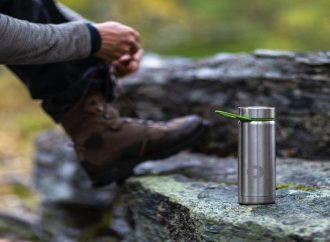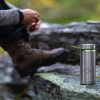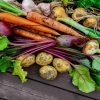Growing crops is never as simple as just planting the seeds into the ground, watering them every so often, and hoping for the sort of haul you see on Countryfile. Alongside type of soil, climate and temperature, perhaps the most important choice to make is which type of survival garden seeds you’re going to use.
Growing crops is never as simple as just planting the seeds into the ground, watering them every so often, and hoping for the sort of haul you see on Countryfile. Alongside type of soil, climate and temperature, perhaps the most important choice to make is which type of survival garden seeds you’re going to use.
This doesn’t mean choosing between asparagus, marrow or carrot – we’re talking about the origin of the crops. You have a number of choices to choose from, including heritage, hybrid and F1.
Each has its own benefits, which also means that each comes with its own disadvantages. Here, we’re going to take a look at the right one for you.
Key Factors To Consider
From bugging in or bugging out, to the amount of people who’re going to be reliant on your crops, you need to make the right decisions before you purchase them.
Fortunately, most seeds are affordable so you do have room to find which is most effective if prepping long enough in advance, but you should go into it with a rough idea.
Another essential thing to consider is how long you have to grow. Things like onions, garlic, asparagus, and artichoke, take much longer than other vegetables, including spinach. This incredibly versatile crop only takes around a month from planting until it’s ready to go.
Radishes are even quicker – with most taking just over three weeks until they’re ready for harvest.
Consider the use of the vegetable before you decide to commit to it, because you’re dealing with a relatively long time frame regardless, so you don’t have an awful lot of leeway when SHTF and you’re in the midst of trying to survive.
You can find a useful guide of how long which survival garden seeds take to grow here. There’s a few surprising things on there, and we always recommend thinking outside of the box – as it often works to your advantage.
One common mistake preppers make is buying hundreds of seeds and not having the knowledge, inclination or space to grow them all properly. So we advise just buying 10-15 types of vegetable seed and some fruit trees to get you started, then by the year after you will know what worked and what didn’t.
Heritage Seeds
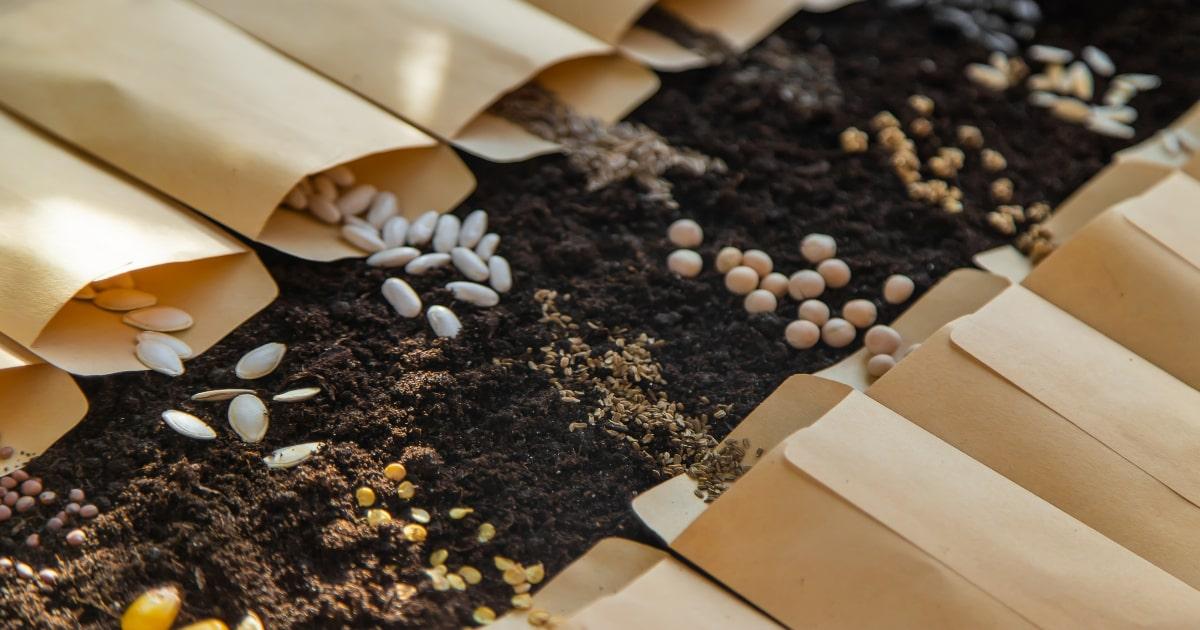
You may have heard of heirloom seeds before, and these are the exact same thing.
These are quite rare, so you’re unlikely to find them for sale from big companies like Mr Fothergill’s as the production isn’t worth the cost, but local gardening centres and reputable UK seed websites like Van Meuwen, Chiltern Seeds, Real Seeds and DT Brown have lots to choose from.
You can also find them courtesy of charities like the HSL, whose job is to preserve the finest families of crops. The main difference here is that heritage seeds generally taste a lot better than their hybrid of F1 alternatives.
If you’re fortunate enough to have the luxury of time, then heritage seeds are the way to go, as you don’t have to compromise on flavour. You’ll also get to taste vegetables the way they were intended and they come in a range of fascinating shapes and colours – like blue potatoes, red carrots and many eye-popping tomatoes.
However, they tend not to offer as many crops per plant, meaning you are setting yourself up for a harvest that isn’t as bountiful as can be and affecting your food stocks.
On the plus side, heritage or heirloom seeds are the seeds of our ancestors, that have not been tampered with genetic modification, making them an all-round more wholesome seed for your family.
Heritage seeds are also capable of reproducing normally, and you can save the seeds from them to grow plants next year, unlike genetically modified variants like F1s which grow the crops but, then if you try to plant the seeds again the following year you’ve got no idea what you’re going to get.
Heirloom and heritage seeds are some of the best options for survival because of this reason, especially if you plan on relying on your crops year after year in a prolonged situation like food shortages.
With heritage survival garden seeds you can enjoy a richer variety of fruit, vegetables and grain, and you’ll quickly discover that going down the heritage route will link you back to the land and the crops your great-grandfathers grew before scientists started tampering with genes.
F1 Seeds
The qualities of these are often misinterpreted by green-fingered preppers around the world. An F1 seed is simply a hybrid of breeding two different strains to make a successive plant that combines the qualities of both – and the F1 stands for Filial 1, AKA first child.
However, as the F1 seed combines the qualities of both, this doesn’t necessarily mean only the good traits will be carried down. Imagine a situation where you have a Plant A, that requires little sunlight but produces little vegetables, and a Plant B that needs a lot of sunlight and produces large vegetables.
You’d hope that by combining the genes of the two would result in a plant that needs very little sunlight but produces large vegetables. However, you have the same chance of this occurring as you do a plant that needs a lot of sunlight, yet produces small vegetables.
That’s the main issue with F1 seeds for companies that are testing the various combinations – but for you, as a customer, the ones you’re able to get the choice cuts, as these are the ones they choose to sell. Take a closer look here, where you can view further pros and cons.
We recommend having a set of F1 survival garden seeds in stock as you can grow them once from the packet and eat them, but as you can’t save the seeds and replant year after year you should always put the main bulk of your seed investments into heirloom and heritage seeds which will sustain you for years to come without buying more and more packets, as F1 forces you to do.
Hybrid Seeds
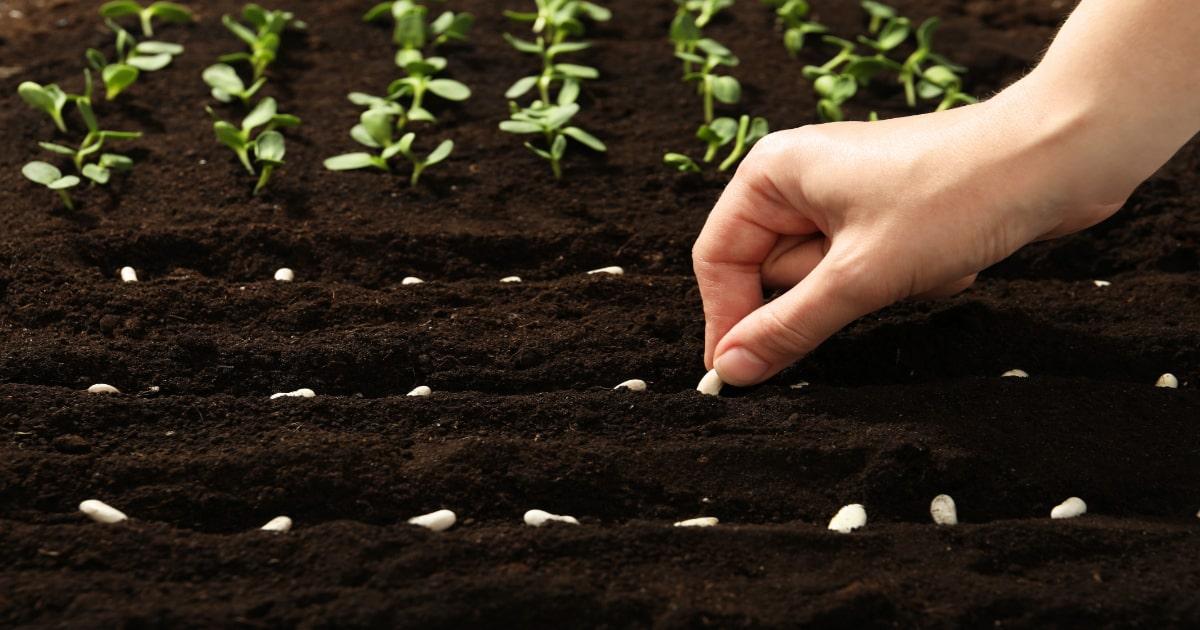
Although F1 seeds are a type of hybrid seeds, they are only one specific type. There’s also a conspiracy that F1 seeds are sold so home-gardeners can’t get the best of the best and take away the company profits, although this is more of a light-hearted take, and one you shouldn’t consider in the serious scenario of the end of the world.
Depending on what type of disaster you’re facing, buying hybrid seeds may be the answer. They come from a long line of cross-pollination, so are more resilient than their competitors, and are stabilised against diseases and other factors that affect their quality and lifespan.
This is very good if you’re facing an ecological disaster that has caused harm to the planet around you. They’re also great as they can be saved for future seasons as+ they have a longer lifespan if handled properly. Your best chance of this is by keeping them in a dry place that isn’t airtight.
Summary
As you can see, there are benefits and negatives of each type of survival garden seed, but generally, there isn’t too much difference between each one. You’re better off testing them all out over the space of a few years, if you’ve stuck to the true description of the word ‘prepper’ and are making lifestyle changes now and getting ready in advance of the unimaginable.
Hybrids and F1s are quite similar, with the hybrids tending to be an all-round higher quality product, but heritage seeds are good if you want to experience a natural product that will last you for years to come.







